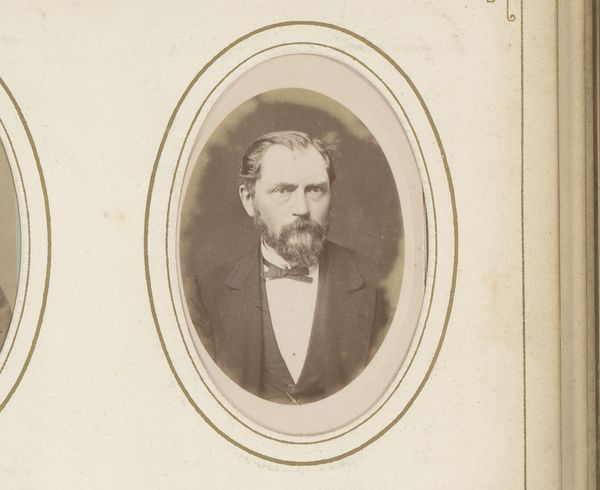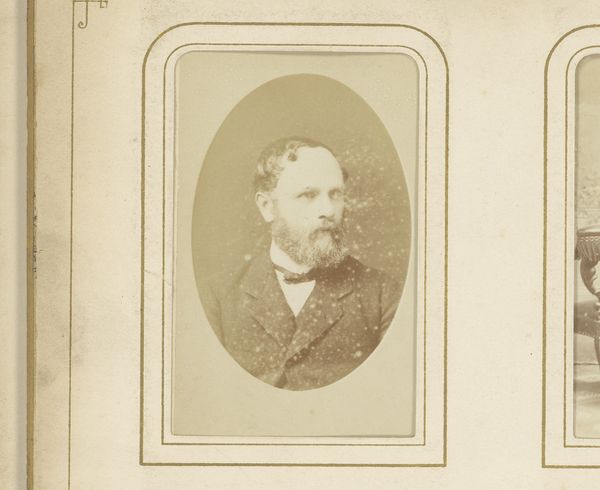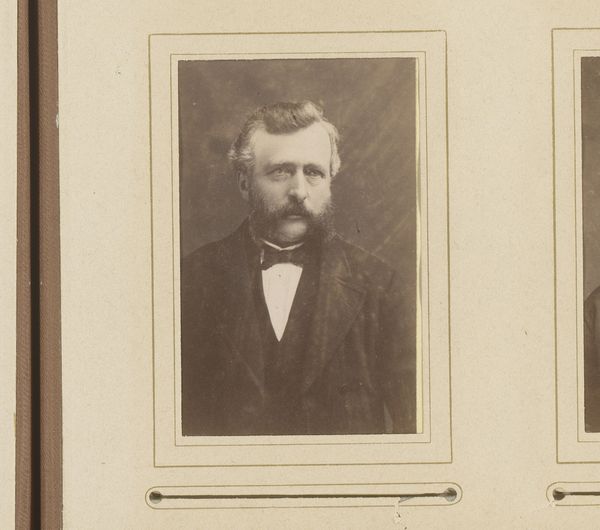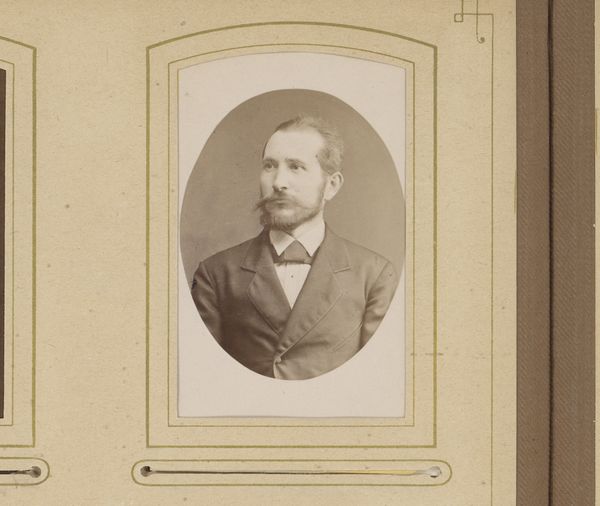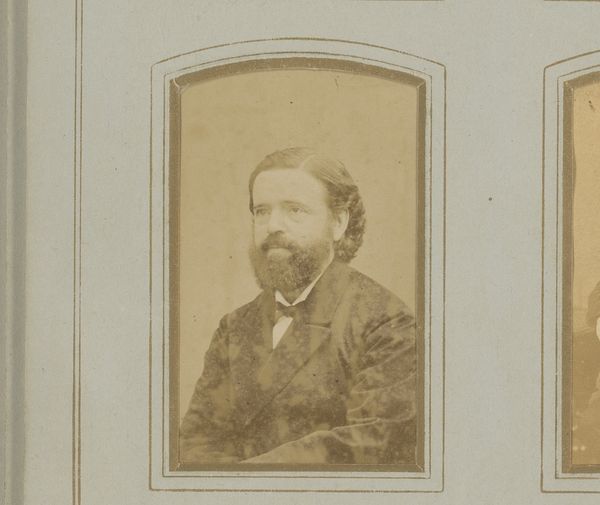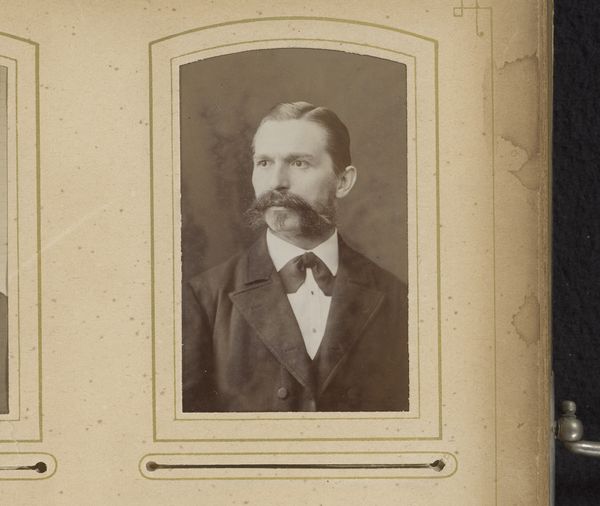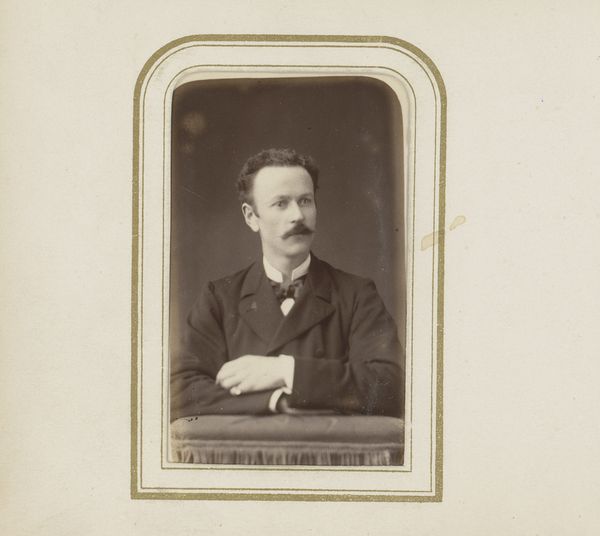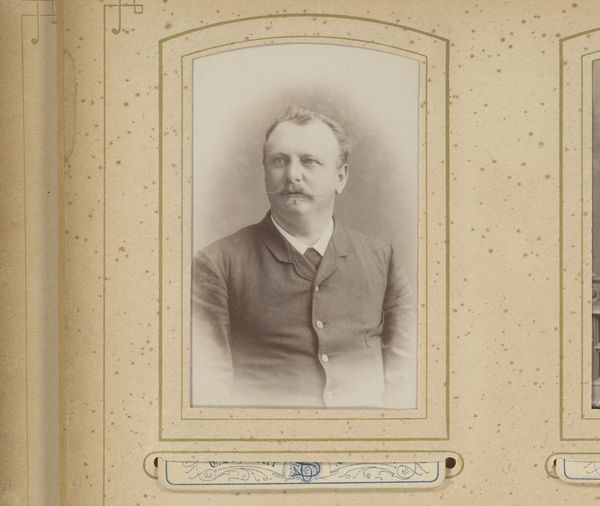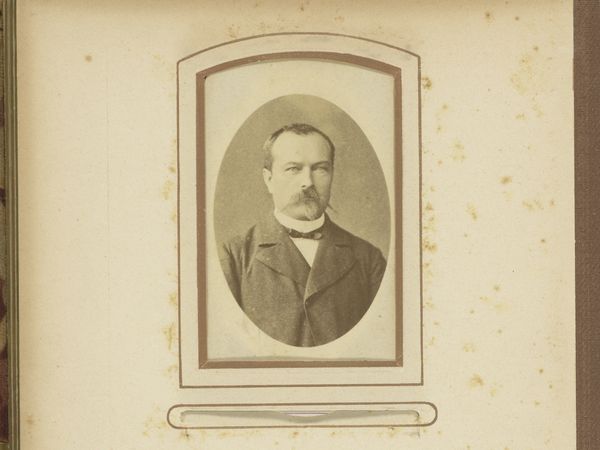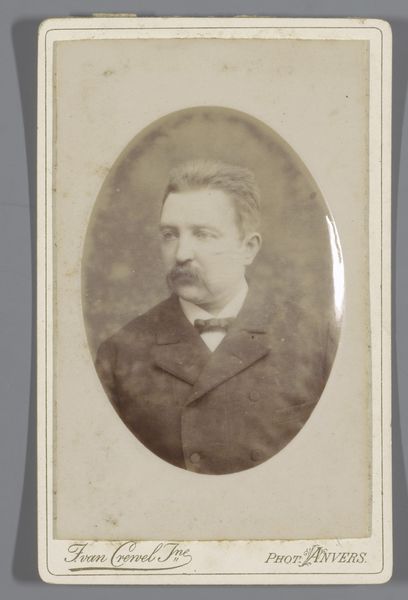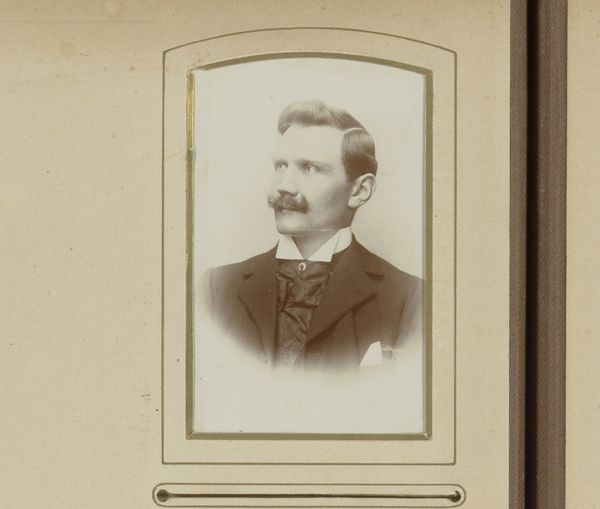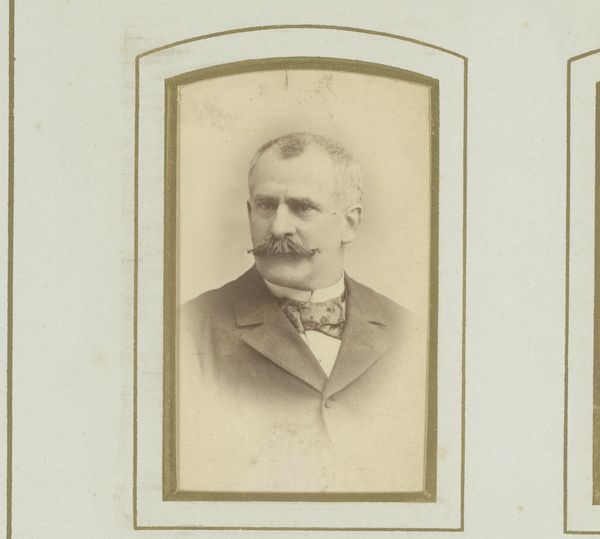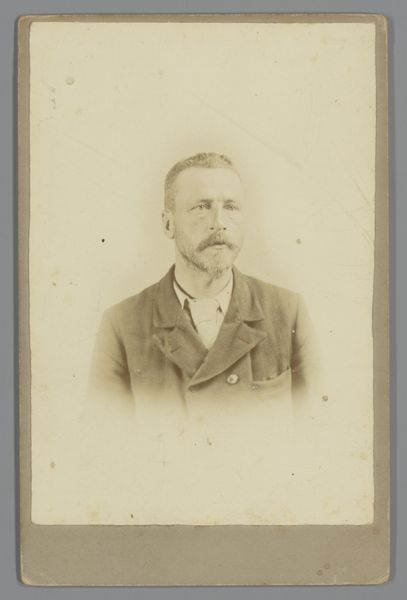
photography
#
portrait
#
photograph of art
#
photography
#
portrait reference
#
underpainting
#
tonal art
#
portrait art
Dimensions: height 84 mm, width 53 mm
Copyright: Rijks Museum: Open Domain
Curator: Up next, we have "Portret van een onbekende man met snor," or "Portrait of an unknown man with a mustache." It’s a photographic portrait made by G. Müller, placing it somewhere between 1870 and 1900. Editor: It's the cool reserve of the gentleman that really strikes me. You get the impression this chap took his portrait very seriously; very stoic and very intent on preserving his image. The subtle sepia tones enhance the gravitas, I think. Curator: Absolutely. The albumen print itself is fascinating. The process was incredibly popular in that era. You had mass-produced cartes de visite all the way up to meticulously crafted large-format display prints. The standardization of this technology really democratized image production. Think about how it altered visual culture, challenging established hierarchies of portraiture controlled by elite painting academies. Editor: It certainly democratized the dissemination of imagery, offering unprecedented accessibility, particularly for those who were unable to commission painted likenesses. Before the wide adoption of the snapshot camera and photography's increasing popularity, something like this photograph became important to those wishing to perform bourgeois social standing. I find it's that interplay of private identity meeting this drive for aspirational expression in public is a central theme to many images produced during this period. Curator: Very much so. You see this replicated even today on social media, where we create performative expressions of our desired selves, manipulating photography with accessible means. What is compelling here is tracing this historical precedent to its more technologically and socially nascent period of adoption. It showcases a shift toward image economies we have simply expanded upon. The materials here, the chemistry and the glass plates all have an important place in that technological trajectory. Editor: Yes, the photograph stands as a record of material conditions and technologies, offering us an insight into both its historical reception and continued influence. The act of memorializing becomes available to many through that portrait’s visual preservation and enduring political relevance within museum culture today. Curator: I find the way in which he strikes his form contributes greatly to the art of image circulation. Editor: Agreed. It highlights a continuous interplay among material creation, widespread dissemination and lasting impression on the collective.
Comments
No comments
Be the first to comment and join the conversation on the ultimate creative platform.
